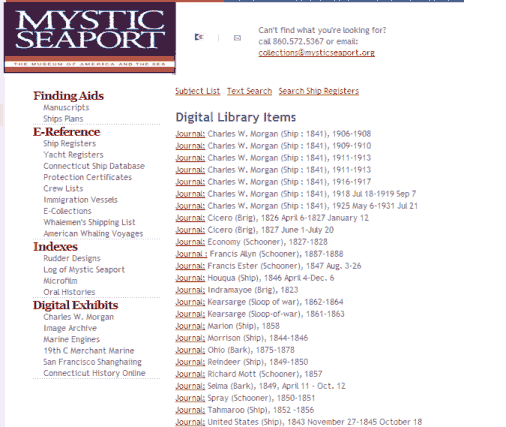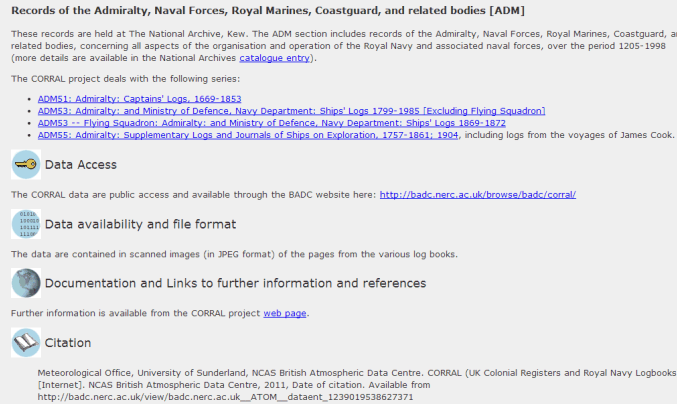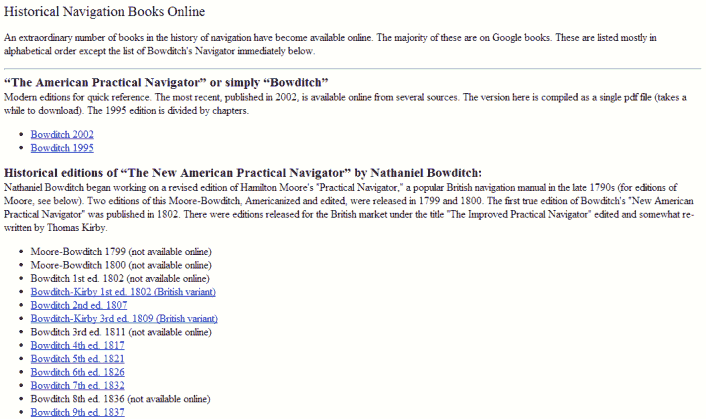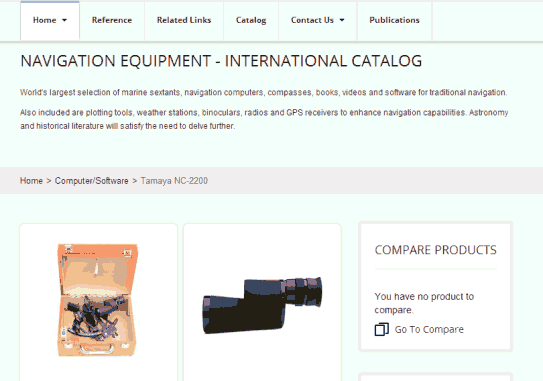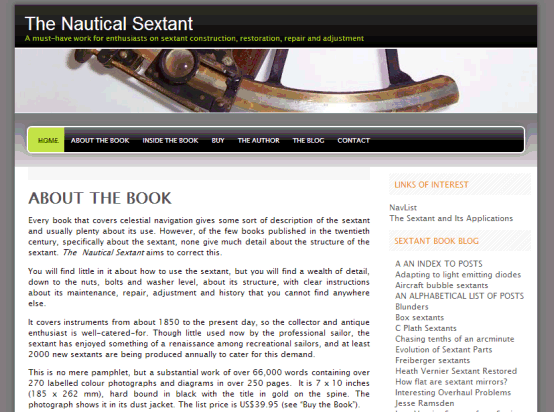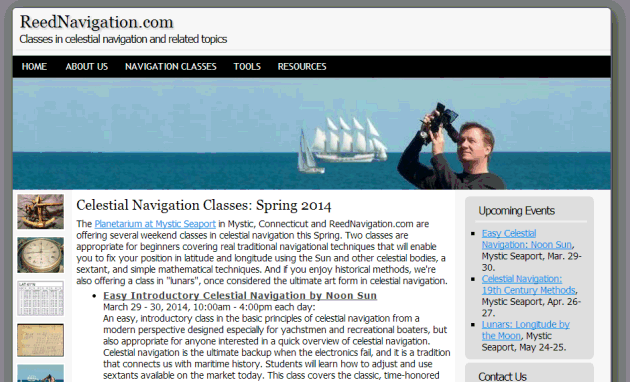
NavList:
A Community Devoted to the Preservation and Practice of Celestial Navigation and Other Methods of Traditional Wayfinding
Re: Avoiding collision.
From: Rino
Date: 2003 Oct 7, 23:04 -0400
From: Rino
Date: 2003 Oct 7, 23:04 -0400
>>>>--- In general, the many passenger ferries will usually do the same (perhaps because there are so many witnesses on board). But as a general rule, merchant vessels, from coasters to supertankers, won't divert from their path by the slightest smidgeon. Might is right. <<<<--- Interesting observation regarding the ferries versus other merchant ships. In my experience (large merchant ships) in the English Channel, ferries hardly ever give way to merchant ships. Same goes for commercial fishing vessels, BTW. I am not saying merchant ships don't exhibit stupid and irresponsible behavior, and I am not trying blame any one group here, just trying to offer another perspective: I think it is important to understand that because of a merchant vessel's manoeuvering characteristics, they need to 'look ahead' much farther than smaller, more manoeuverable vessels. Consequently, there are many 'targets' to keep track of, especially in the English Channel, THE most congested shipping lane in the world. So you can see how, from a merchant vessel's perspective, small sailing vessels might end up lower on the priority list regarding collision avoidance. I'm not saying that's right, it's just a fact of life. But while they may be lower on the priority list, they are still being tracked, usually by ARPA, and if possible also visually. Another list member commented on the bridge being left alone for 10 minutes. While that is inexcusable, I must say I have been in more situations where small vessels were without lookout or navigator, than large vessels. I used to sail around the Caribbean on a medium sized tanker, and from my experience there, I'd say many skippers of sailing vessels don't seem to realize that they can be virtually invisible to larger ships, especially in rough seas. Many don't carry radar reflectors, and so they don't show up on the radar until they are very close. I have also encountered many yachts that would not carry any navigation lights at all. They would sometimes switch them on when they realized they would get very close to us, but by then it would be too late for us to make a manoeuver, which resulted in very short passing distances... As Doug has already commented, many ships have excellent crews, highly trained and very serious about their job. Unfortunately some, mainly flags of convenience, manage to marr the image of a whole industry. Rino -----Original Message----- From: Navigation Mailing List [mailto:NAVIGATION-L@LISTSERV.WEBKAHUNA.COM] On Behalf Of Fred Hebard Sent: Tuesday, October 07, 2003 22:47 To: NAVIGATION-L@LISTSERV.WEBKAHUNA.COM Subject: Re: Avoiding collision. George, I think you're being overly rude to our large ship brethren here (perhaps, in your way, to stir discussion). First, we all know the custom is that small craft give way, and that usually pleasure craft defer to commercial craft. I would hardly call this custom of the sea "bullying." Yes, the Royal Navy, who wrote the regs, more or less, and enforces them on occasion, more or less, will adhere to them. And captains of government-owned ferries. In the case of the Navy vessel, they also will have a team of at least 5 or 10 people, perhaps many more, keeping track of every vessel in sight; that might not be possible on a merchant vessel in especially crowded waters. But there can be differences between regulations imposed from above and those observed in real life, and I think, in this instance, the customs observed in real life are based on sound physical principles, such as you can't turn a large vessel very far very fast. It probably is good to leave the regulations the way they are and the customs the way they are. And small-boat sailors will always complain about the bullies, and officers on large vessels complain about the lice infesting the waters. But only in the privacy of their own cockpits or bridges, not when they meet ashore in the pub or the Nav-L list! Second, I don't believe Doug Royer was referring to _predicted_ positions of vessels but rather to comparisons of _current_ positions obtained by sextant and by gps. Yes, if one is advancing a series of sights, then there might be an incentive not to change course, but Doug gave no indication of that. Also, a prudent master would stop such diversions before the ship entered coastal waters. Yes, an imprudent master might not, but then he probably would be imprudent in other matters also. Fred On Tuesday, Oct 7, 2003, at 11:14 US/Eastern, George Huxtable wrote: > Doug Royer said recently, in another thread- > >> I had the opportunity to use both of these types of Russian(I should >> say >> Soviet)sextants.One was owned by a Polish ABS I served with and he >> consistantly got outstanding LOPs useing his.He won an $1800.00 pool >> on one >> transit when his final position was less than 0.2nm from the ships >> GPS pos. >> when the evolution was stopped by the master. > > My, that is encouraging! To think that the art of celestial nav is > still > sufficiently alive-and-well on the brige of American merchant vessels, > to > the extent of that much hard cash riding on the accuracy of > observations > and predictions. > > Somehow, it brings to mind another topic which doesn't seem to feature > much > on this list, that of avoiding collision. > > My own cruising area is mostly the waters of the English Channel, > frequented by many pleasure craft but also the busiest passage in the > World > for the through transit of ships. > > Some parts of the through passage are split into traffic schemes where > special rules apply: I am not considering those areas, but other parts > of > the Channel, where it is in no way a "narrow channel", and in which > vessel > are not constrained by their draught. > > In such circumstances we are all aware that the Colregs give > right-of-way > to a sailing vessel (which as the stand-on vessel is expected to > maintain > her course and speed) over any power vessel (which is expected to give > way). We are all equally aware that no such thing will happen, and that > instead the rule "Small vessels give way to large ones" will be > applied. > > To give credit where it's due, there are a few exceptions. Naval > vessels, > I've found, can be relied on to keep clear where the rules say they > should. > In general, the many passenger ferries will usually do the same > (perhaps > because there are so many witnesses on board). But as a general rule, > merchant vessels, from coasters to supertankers, won't divert from > their > path by the slightest smidgeon. Might is right. The colregs are > considered > irrelevant. Nobody on the bridge will even consider changing course by > 5 or > 10 degrees for a few minutes, to avoid a small craft. > > We are forced to give in to this bullying, of course. Nobody could > survive > sailing English Channel waters for 40 years, as I have, by sticking to > his > rights. I imagine it's the same everywhere, but it would be > interesting to > learn if others on the list have the same experience. As far as > interactions between large vessels and small ones is concerned, the > colregs > are a dead-letter. > > But now Doug's revelation, above, adds something to the picture. > Imagine > the scene on the bridge, when everyone knows that there's $1800 riding > on > exactly where the ship will be, within a small fraction of a mile, at > the > moment the master gives the word. Which one among them is going to be > brave > enough to order a course change to avoid me in my pesky little sailing > craft, a few miles ahead on the port bow? > > George. > > > > > ================================================================ > contact George Huxtable by email at george@huxtable.u-net.com, by > phone at > 01865 820222 (from outside UK, +44 1865 820222), or by mail at 1 Sandy > Lane, Southmoor, Abingdon, Oxon OX13 5HX, UK. > ================================================================ > >

